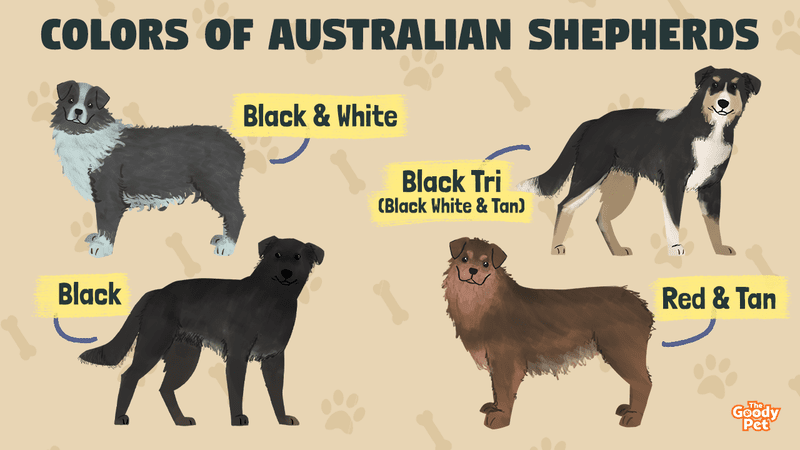Australian Shepherds are a personal favorite dog breed for many reasons. These smart little furballs can pretty much do it all, from serving in law enforcement or herding sheep to being fantastic family companions.
Australian Shepherds are also among the best-looking dogs in their medium-built category. Whether it is a black tricolor or an exotic merle Australian Shepherd, they never disappoint in terms of aesthetics.
Here are 20 different varieties of Australian Shepherds that you probably didn’t even know about and what makes them special. That way, if you are in the market for an Aussie Shepherd, you know what your options are.
20. Self Red Merle
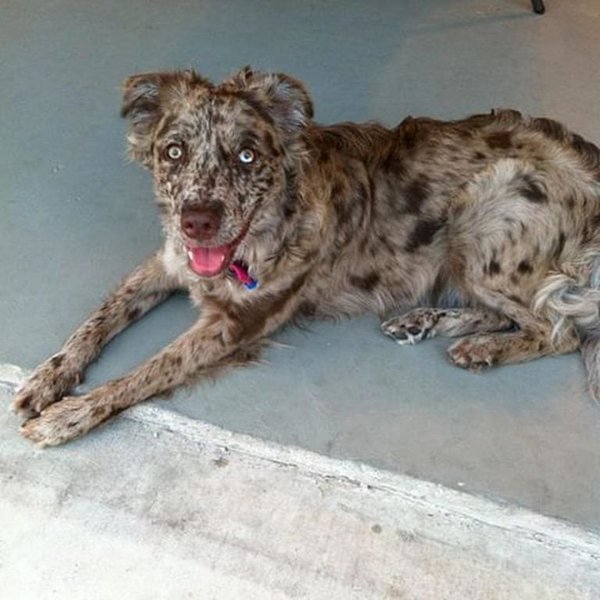
The self red merle Australian Shepherd is like the self blue merle in that there are no white markings. In this case, the self red merle Aussie Shepherd may have a grayish or off-white coat with red markings all over the body.
The red marks have an irregular or mottled appearance to them. They are also irregular in size, with the largest appearing over the torso and smaller spots appearing on the face and limbs.
19. Brindle
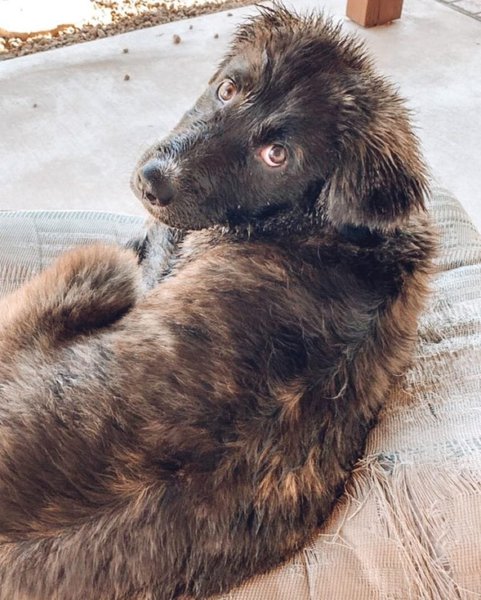
Brindle Australian Shepherds have black stripes on brown or red fur. This gives the Aussie Shepherd a bit of a tiger-like aesthetic that is more distinct in some dogs than it is in others.
The stripes are best seen over the torso and may appear as nothing more than dark patches over the face and limbs.
In bicolor or tricolor Aussie shepherds, the white patches of fur are spared and do not demonstrate the brindle stripes.
18. Black
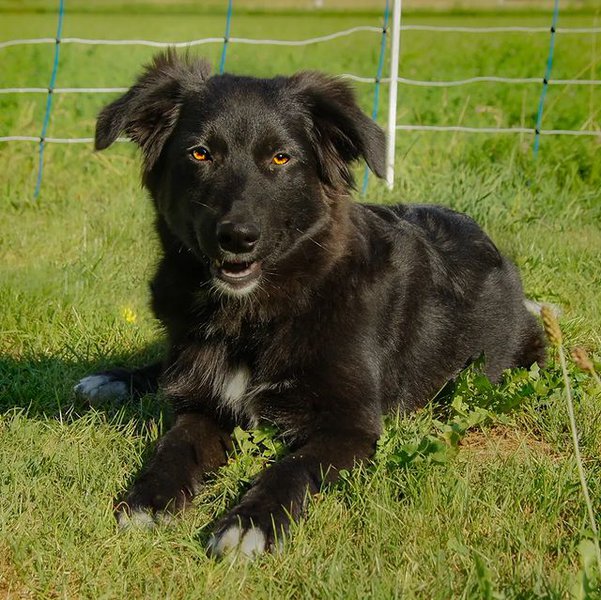
Black Australian Shepherds have a completely black coat. This is relatively rare as most Aussie shepherds have white or tan markings in addition to the main color for a bicolor or tricolor aesthetic.
With black Australian Shepherds, standards stipulate that there shouldn’t be even the slightest trace of another color on the dog’s coat.
Despite their unique appearance and exotic vibe, black Australian Shepherds are actually not rare. This standard variation is actually quite common, especially with the relatively high demand for single, solid-toned Aussie Shepherds.
17. White
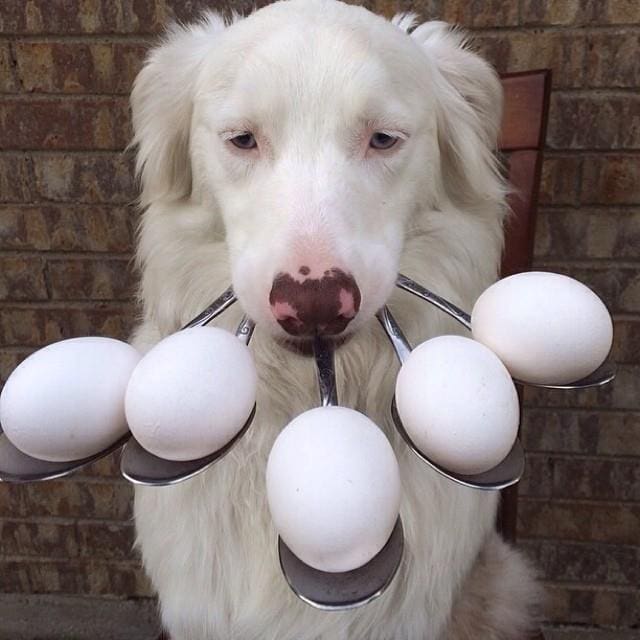
All-white Australian Shepherds are relatively rare compared to other single-colored Aussie Shepherds. This is because the genes responsible for the leucism or all-white coat are super rare and often recessive, which means both of the pup’s parents need to be carriers of the gene.
White Australian shepherds will often have dark pigmentation on the nose and eyes. If the nose is pink and the eyes are blue, the white Aussie Shepherd is probably expressing albinism genes.
16. Red
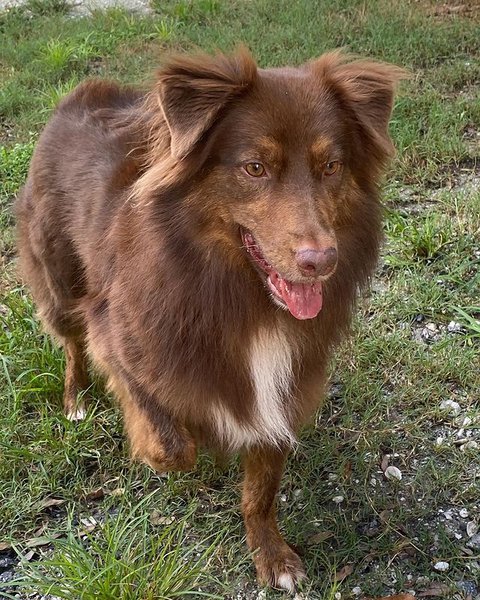
Red Australian Shepherds have what is essentially a brown coat but with more of a rusty red tone than the typical brown Aussie Shepherd. These red undertones are best appreciated in the sunlight.
Red Australian Shepherds do not typically have any white or tan markings. However, you may notice different shades of reddish brown on the same coat. In these cases, lower surfaces like the chest or belly area may have a slightly lighter shade of red.
15. Brown
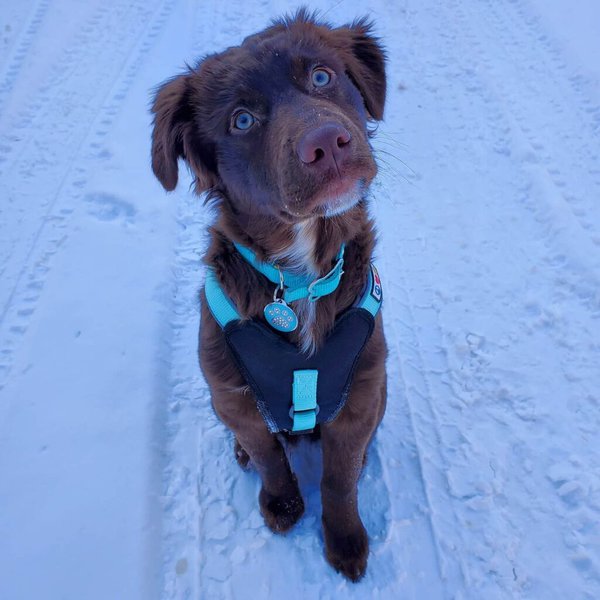
Brown Australian Shepherds are commonly mistaken for red Aussies, which is understandable. After all, they are both on the spectrum of brown shades. Brown Aussie Shepherds, however, are the quintessential, earthy shade of brown.
The shade of brown on a brown Australian Shepherd can best be compared to the dirt or most light tree barks. Some are even darker and have a dark, chocolate-brown hue. What matters is that it is a solid shade of brown with no white or tan markings elsewhere on the coat.
14. Black & White

Black and White Australian Shepherds are very common. The black part of the coat, in particular, is a result of a dominant gene. This means that only one parent needs to have black fur for the Aussie Shepherd pups to possibly turn out black and white.
The white fur covers a minority of the coat. It is often localized to regions like the neck, chest, belly, and limbs. Black and white Australian Shepherds may also have white bands running along the center of the face from the forehead to the nose.
13. Black White & Tan (Black Tri)
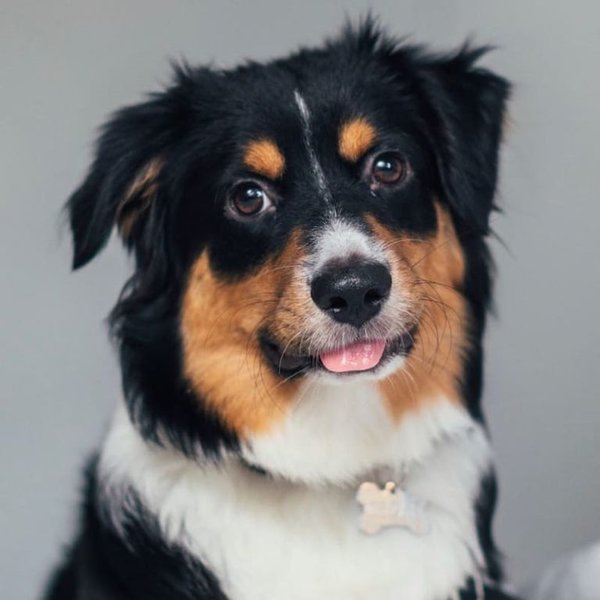
Black tricolor Australian Shepherds are arguably the most common variation there is. This is because the tricolor trait as well as predominantly black fur are both traits coded for by common dominant genes.
The black tricolor Australian Shepherd will have a mainly black coat with white and tan markings. The tan markings are usually on the face, neck and paws while the white markings can be on the face, neck, chest, and limbs.
12. Black & Tan
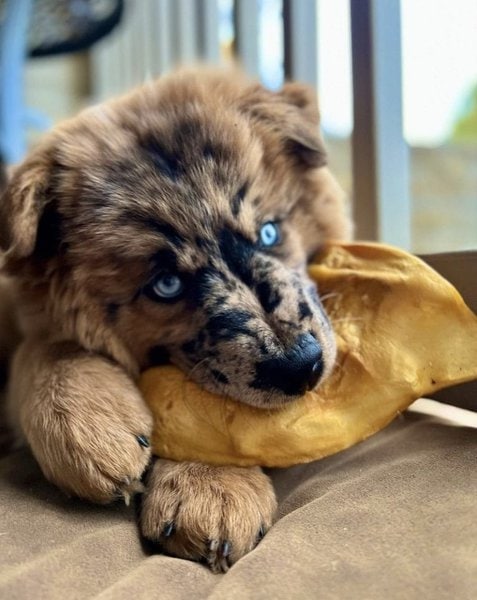
The black and tan Australian Shepherd is comparable to breeds like the German Shepherd in terms of the color combination and distribution of markings.
The coat on black and tan Australian Shepherds is mainly black especially over the head, most of the torso, the tail, and limbs. The tan coat on the other hand appears mostly as large, continuous patches on the neck, belly, and limbs.
The tan fur may also form facial markings. Here, the tan fur will appear mainly on the muzzle and as single dots over each eye.
11. Red & Tan
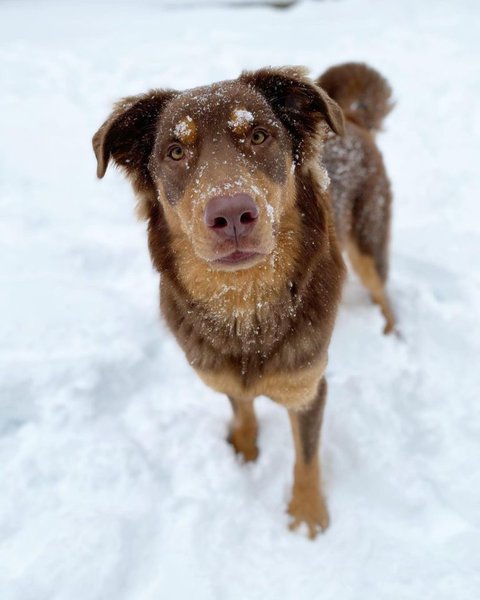
The red and tan Australian Shepherd is a beautiful and unique looking dog with a mainly red coat with tan markings. These two shades of brown work very well together for a very unique aesthetic that makes red and tan Aussie Shepherds one of the most sought after varieties.
Something interesting about the red and tan Australian Shepherd is that the genes responsible for the red coat also affect pigmentation of the nose. This gives the nose pad a pale red appearance compared to the black nose common in predominantly black variations.
10. Red Tan & White
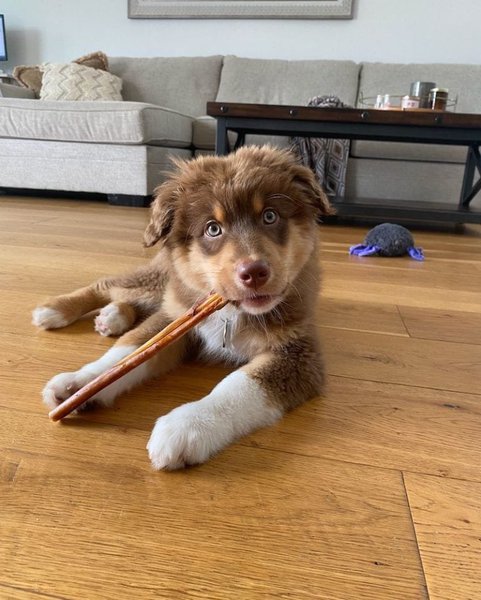
Red, tan, and white Australian Shepherds are a variety of the breed where red fur covers most of the coat with white and tan markings. The genes responsible for the red fur are recessive which makes the red tricolor Aussie significantly rarer than the black tricolor.
From a distance, it may be difficult to tell red, tan, and white tricolor Aussie Shepherds from the red and white Aussie Shepherd. This is because the red coat and tan markings are not always easily distinguishable especially if the shade of red is pale and light.
9. Red & White
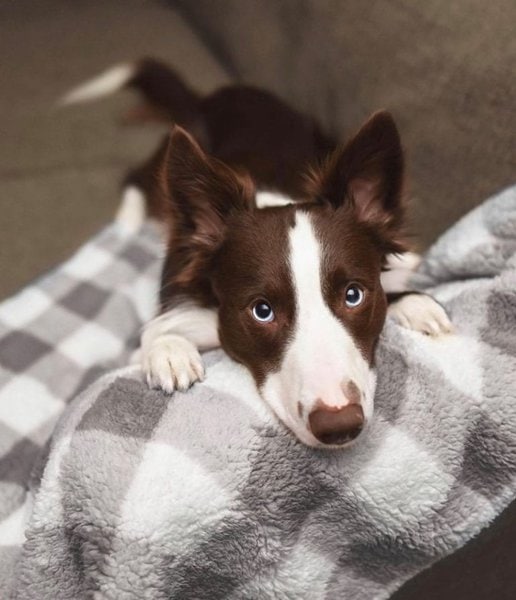
Red and white bicolor Australian Shepherds are quite common and are a very popular variation especially for dog owners who want an Aussie Shepherd with a subtle aesthetic.
The coat on red and white Australian Shepherds has mainly red fur with the white patches restricted to parts of the face, the neck, chest, and limbs.
An important distinction to make when identifying Aussie Shepherds is that there shouldn’t be any merle spotting.
8. Fawn & White
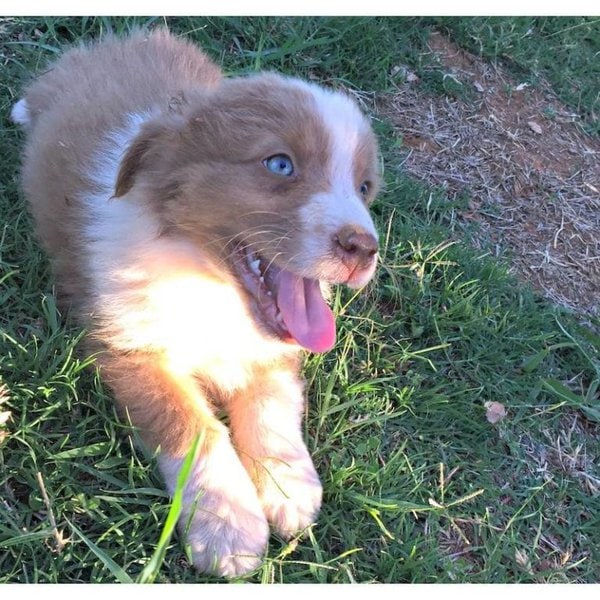
Fawn and white Aussie Shepherds have a mainly fawn coat. Fawn appears as a watered-down shade of red or brown. This occurs when the Australian Shepherd inherits the genes responsible for red or brown fur as well as dilution genes.
The part of the coat that would have been a solid red ends up being fawn in fawn and white Australian Shepherds. However, the white part of the coat remains solid.
It is also common to find merle markings in fawn and white Australian Shepherds.
7. Full Body

Full body Australian Shepherds are basically single-colored. This occurs mainly with black, red, brown, and white Aussie Shepherds.
With these Australian Shepherds, the entire body is covered by a single color of fur. With some varieties like red and brown, there may be a bit of a shade gradient, with the color being slightly darker on sun-exposed surfaces like the face and back.
The most important defining feature of full body Aussie Shepherds is the total lack of markings in any other color.
6. Sable
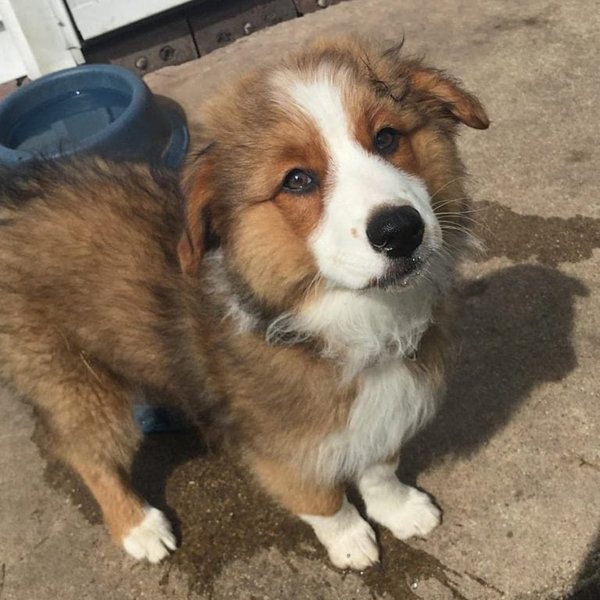
Sable Australian Shepherds have black tips on lighter-colored fur like red, brown, or tan strands. It is a relatively rare marking caused by the presence of sable marking genes in the Australian Shepherd.
Interestingly, the black tips sometimes spare the white parts of the coat. When the sable trait appears on bicolored Aussie Shepherds like red and white, it may give a tricolor appearance from a distance.
Sable markings are impossible to pick up on all black, or simple black and white Aussie Shepherds.
5. Blue Merle Tri
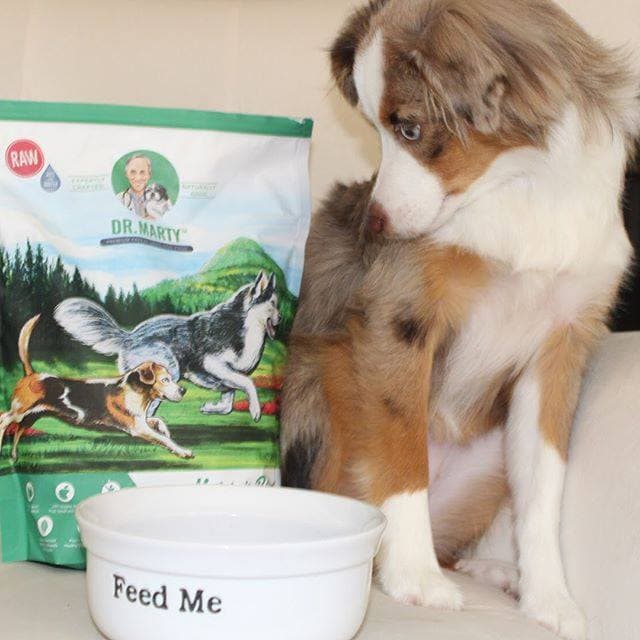
The Blue Merle Tri color combination has become one of the most iconic Australian Shepherd aesthetics. Very few dogs can pull off the mottled, merle spots and irregular markings but the Aussie Shepherd does a fantastic job.
The irregularity in markings and color distribution makes it difficult to predict what Aussie Shepherds with the trait will look like. What they all have in common is a mainly white coat with tan spots and watered-down or blue markings all over the body.
4. Self Blue Merle
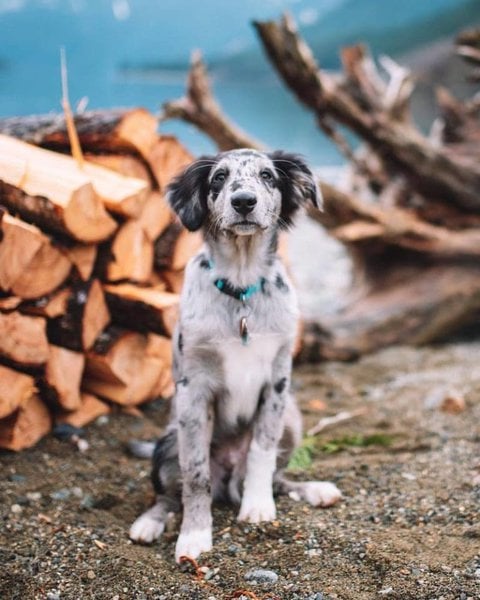
Self blue merle Australian Shepherds do not have any white or tan markings. Their absence is what makes them different from the blue merle tricolor variation of the Australian Shepherd dog breed.
Instead of white markings, self blue merle Aussie Shepherds have white fur as the predominant coat color. This is littered irregularly with diluted-black, mottled spots which form the markings.
The merle gene may also cause the Aussie Shepherd to have blue eyes even into adulthood. Unfortunately, this gene is associated with eye and ear problems in some Aussie Shepherds.
3. Red Merle Tri
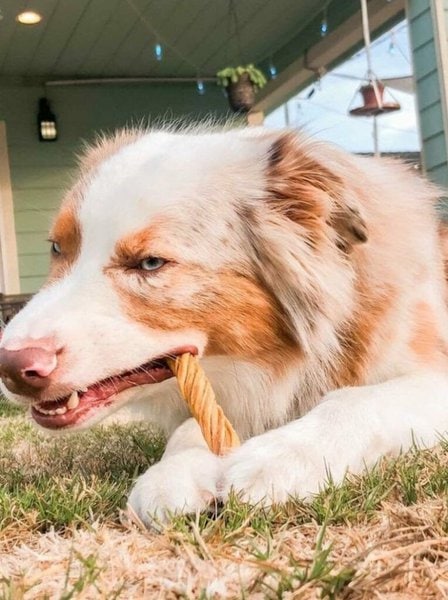
Red merle tri Australian Shepherds are similar to the black merle tri variation. This is because of the presence of a predominantly white coat with the presence of tan markings. The difference is that the red merle tri Aussie Shepherd has solid red, mottled markings instead of black.
These spots are spread out randomly and in different sizes all over the dog’s body.
The red merle tri Aussie Shepherd also has a distinctly red nose and may either have blue or brown eyes.
2. Bobbed-Tailed
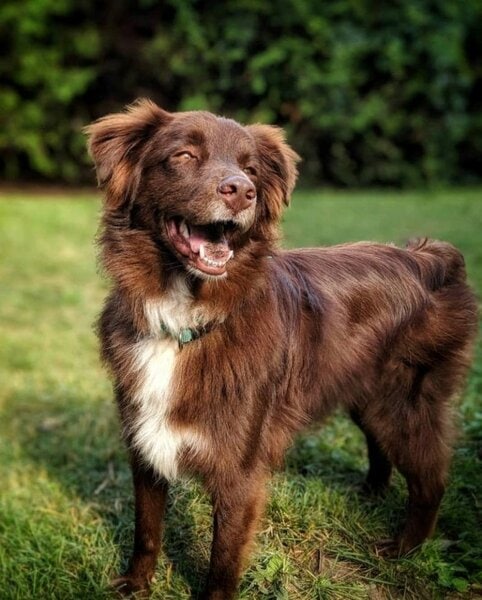
Bobbed-tailed Australian Shepherds may occur naturally, but they are rarer than their long-tailed counterparts. This variety of Aussie Shepherds may have a stub of a tail that should not exceed 4 inches, according to the American Kennel Club.
It is important to understand that docked long-tailed Australian Shepherds are not bobbed-tailed Aussie Shepherds despite the tails looking more or less the same. Even with docking, long-tailed Australian Shepherds will still most likely produce long-tailed pups.
1. Long-Tailed
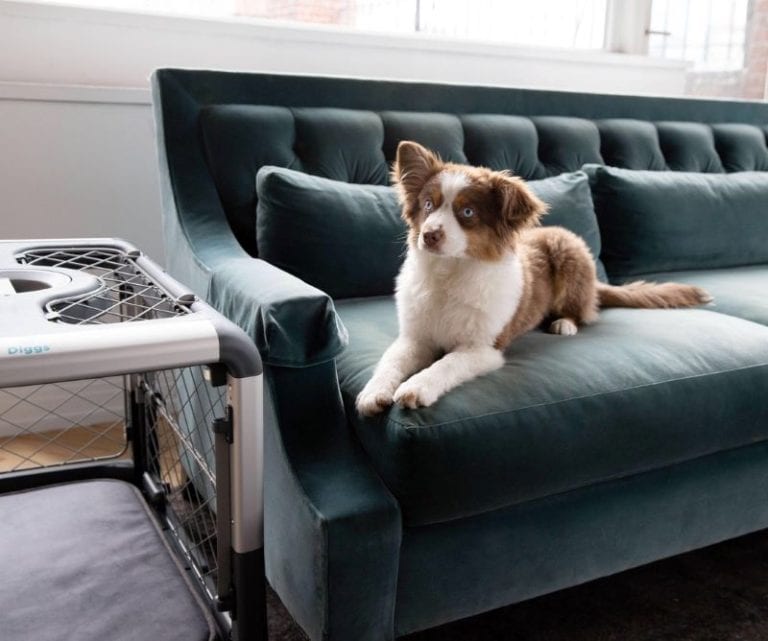
Long-tailed Australian Shepherds are more common than most people think. In fact, most Australian Shepherds are born with long tails that are naturally straight and covered with thick, long coats.
While long-tailed Aussie Shepherds are common at birth, most of them get docked while puppies which is why you may not find them very easily in this natural state. However, they are more commonly found in countries where docking is outlawed, especially in the UK.
Related Questions
What Is The Most Common Australian Shepherd Color? The black tricolored Aussie is the most common Australian Shepherd color variation. These Aussies have a predominantly black coat with tan and white markings on the muzzle, chest, belly, and limbs. The Blue merle tricolor is another very common and popular variety of the Australian Shepherd. However, it is plagued with controversy due to the problematic nature of Merle genes.
Do Australian Shepherds Change Color? Yes, Australian Shepherds change colors as they grow older. This is most notable during puppy years as the dog settles into their adult coat color intensity. This process is entirely controlled by genetics. Aussie Shepherds also change color in old age, but this is mostly graying, as is seen with many other dog breeds.
At What Age Do Australian Shepherds Eyes Change Color? Australian Shepherd dogs start to change their eye color from about the age of 3 to 4 weeks. They are born with gray or blue eyes. As they grow older, the Aussie pup’s eyes develop more melanin and start converting to brown shades. This process is more often than not complete by 12 to 14 weeks of age but may take longer in some Australian Shepherd puppies.

